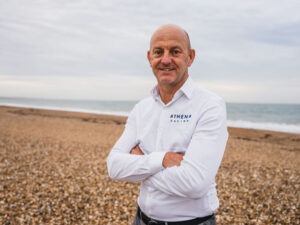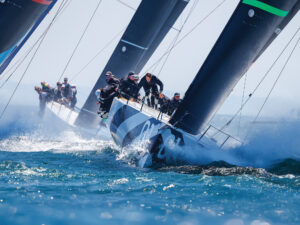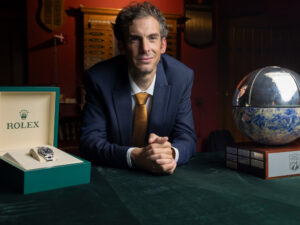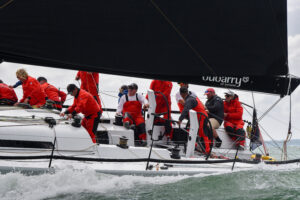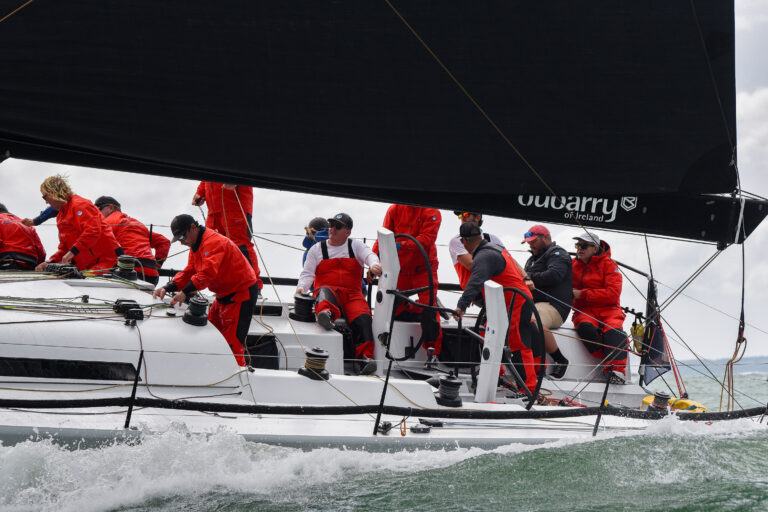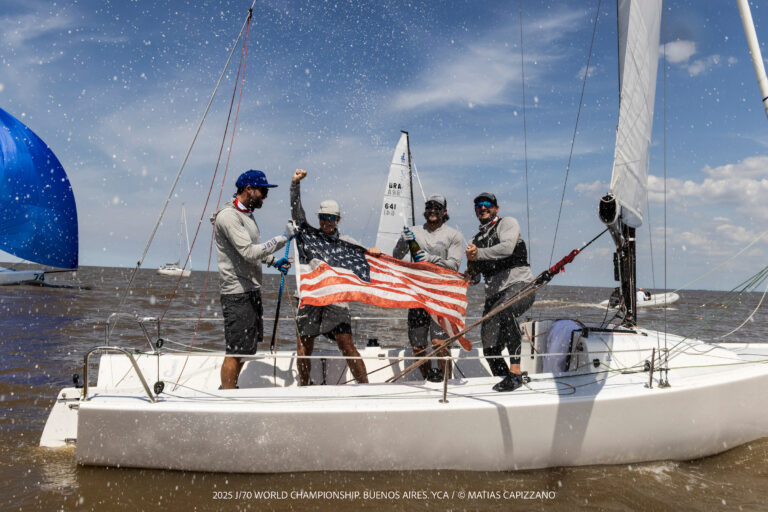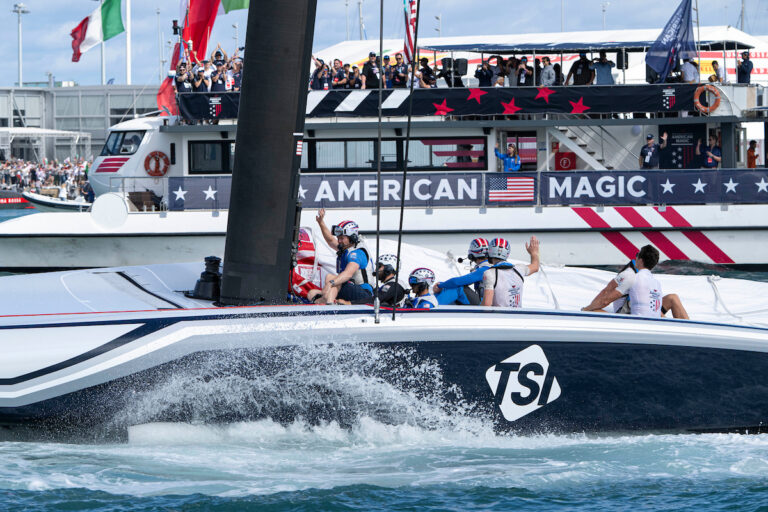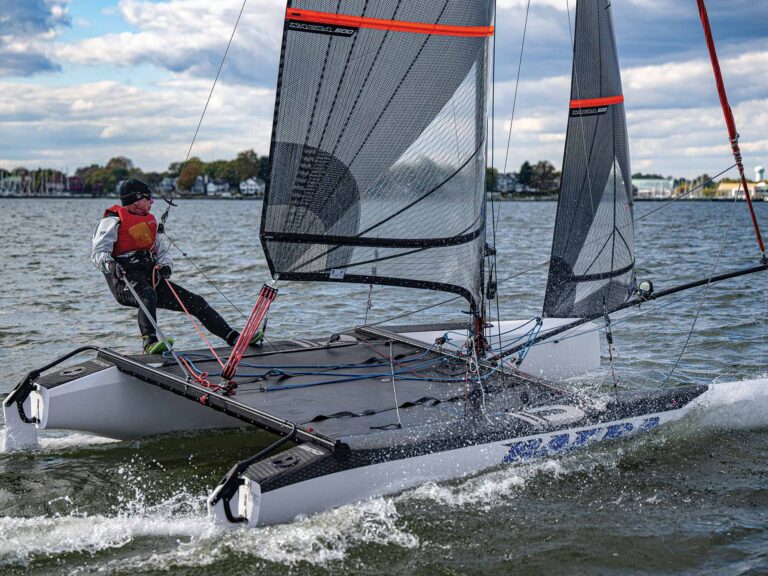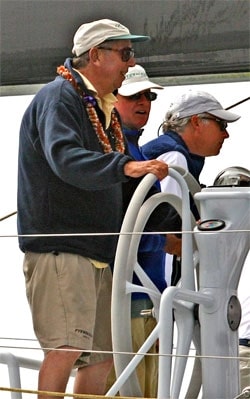
Roy Disney
The Morning Light project ties together so much of Roy Disney’s life-namely, feature films, sailing, and the Transpac Race-that it seems strange it took him until his mid-70s to come up with the idea. Well, that may be because it wasn’t his idea, at least initially. Disney credits TP52 Class Association executive director Tom Pollock with planting the seed that was passed to Disney by Leslie DeMeuse, who’s collaborated with Disney on other sailing-related film projects.From there Disney ran the idea-to document the selection and training of a crew of young adults to race in the 2007 Transpac Race from Los Angeles to Hawaii-by a few higher-ups at Walt Disney Studios, where we hear he’s got a little pull, and received a favorable response. Then, of course, the real work started. Earlier this year Disney and his selection committee, which includes longtime sailing master Robbie Haines and DeMeuse, sifted through 538 applications and picked 30 finalists. On Saturday these finalists will arrive in Long Beach, Calif., for a week of selection trials, mostly onboard Long Beach YC’s Catalina 37s. For the lucky 15 that make the cut, the next stop will be Hawaii in January for a series of training sessions aboard a TP52 called Morning Light that Disney purchased from Philippe Kahn. A little less than a year from now, this crew will compete in the 2007 Transpac Race. They will race by themselves-without any “adult” supervision-and hopefully become the youngest crew, by average age, to finish the 2,225-mile race.To get a grip on this unique project we interviewed Disney, Haines, and one of the 30 finalists, Jesse Fielding, a 19-year-old sophomore at the University of Rhode Island. We hope to catch up with Fielding midway through the selection process and at the end.The interview with Disney follows, as do links for the other two. For more on the Morning Light project, log on to the project’s website, www.pacifichighproductions.com .How did this project come together?We were eating breakfast almost a year ago, not long after the Transpac, and Tom Pollock, who runs the TP52 association and lives down in Capistrano, right near Leslie DeMeuse, had this idea and they got talking about it one day in August. Leslie brought it to me and I went, “Geez, that’s a really neat idea.” I wrote a little two-page summary of the idea and gave it to Dick Cook who runs the film division at Disney. Everybody who’s read it thinks it’s a good idea.As it stands now, is it pretty close to your original vision?My concept originally, as I thought a little about it, was that it sort of divided itself naturally into three acts, which is the way we like to look at films. Act 1 is the formation of the team, the picking of a bunch of young people to be a part of the team, which is the process we’re right in the middle of now. Act 2 would be the training we’re going to give them in Hawaii next spring, and Act 3 would be the race itself. It’s sort of curtain time on Act 1 as we speak. We’ve got 30 kids in Long Beach and we’re going to be very carefully looking at them in a number of ways to get them culled to 15. I know that’s going to be very hard.What was your reaction to the number of applications you received, I believe it was 538 or so?It was amazing because it happened so quickly We set up that website and we only gave ourselves five weeks of its being up. In five weeks to get 550 people to apply, it’s pretty astonishing. It was pretty amazing that so many of them came in. We gave ourselves a rather short time, only a couple of weeks, to go through them and get them from 550 down to 30. It’s thanks to websites like Scuttlebutt and Sailing Anarchy that the word got out so quickly to the right people.You could’ve picked any event. What made you pick the Transpac?I’ve been connected with Transpac for a long time. It’s my favorite race by far, partly because it’s a great race and partly because of where you wind up at the end of it. It seems a natural thing. It’s a more fun race in the sense that you get to go downwind a lot more, and of course these TP52s are designed to do that very well. As Bill Lee said a long time ago, “Fast is fun.”Selecting the 15 sailors for the film has to be a little different than what you would do to pick a sailing team. Are you taking into consideration the film when making your picks?Sure we are. That’s part of it. But another part of it, as I will say to them when we get together, is that an awful lot of it is going to have to do with character, the ability to learn and work together, and the ability to take the hard knocks with the good stuff. Because that’s what makes a team. In the final analysis, we’re making a movie about how a team gets formed, how it comes into being, and how, when it’s working at its best, a team becomes more than the sum of the parts. In fact, that was a title for the movie I was thinking about, “More Than the Sum of The Parts.”Drama in an offshore race is usually not desired. A good race is often a quiet one. Are you hoping for a more exciting that normal Transpac?This is a tough race. When you get a bunch of TP52s out there, it’s going to be even tougher. So simple isn’t going to be part of the equation at all. There’s really two dramas: one is the race, how you’re going to do; but the other part, which is more important and fun as filmmaker, is about the people. We’ve done, Leslie and I, a whole bunch of films about sailing-she’s done more than I have. We always say when we’re working on these things that they’re not movies about boats, they’re movies about people. So that’s going to be uppermost in our minds all the way through.In selecting the final 15 sailors, are you looking for pairings that may create a little drama during the training or the race?No. I don’t think we can afford to be cutesy like that. We’ve got a boat that’s got to go 2,500 miles safely and, hopefully, competitively. I think we could take any 15 out of the 30 and they’d be fine.How do you see this film when it’s finished? Is it a blockbuster, a critically acclaimed film that maybe doesn’t have the commercial success, a movie to promote the sport of sailing?All of the above. You’d like to satisfy everybody. All of us, as filmmakers, want to make a film primarily that we want to watch. Those of us who have had a little success tend to find that the films that please you will please a lot of other people, too. So you don’t go out and try to make a film for somebody else, you try to make a film for yourself. I would like this film to appeal to people who have never been sailing and have always wondered what it’s like out there. People who say, “So what do you do at night, drop the anchor?” I’d like it to demystify it a little bit that way. And I’d like for people to understand that it’s a very demanding and athletic sport.What sort of modifications and fixed cameras are you planning for the TP52?We’re still talking about that. We’re probably going to have four fixed cameras similar to what they had on the Volvo boats-we’ve gone and looked at a couple of those-and a handheld camera that one of crew will be operating.And you’ll have a support boat tailing the boat?That’s still up in the air. We have a lot of possibilities. The support vessel is not going to be a babysitter, let’s put it that way. It’ll be there partly to film. If it turns out that it’s possible to download stuff off the boat and onto another hard drive, we’d love to be able to do that.And what about you, will you be on the support boat?I’m going to be on Pyewacket.So you’re back in the game?I de-retired. I think I must have done this right after I said I was retiring. We’re chartering [the 86-foot maxZ 86] Pyewacket from the Orange Coast College.That’s great. Are you bringing back the old team?We sure are. We’ve got the old gang all lined up. Stan Honey’s going to be our navigator again, fresh from his victory in the Volvo.During the training, will you be an active part of the production crew?Absolutely. This is sort of our film to make. The filmmakers involved in the production are not sailors, so we have to be tutors part of the time. But I’m glad that they don’t know too much because they ask all the stupid questions, and that’s perfect, because we have the answers but the questions need to be asked. When you know what the answers are, often you take them for granted. Will you select a team leader in the selection process, or hope it evolves during the training?It’ll come out in the spring, I think, in Hawaii. We clearly have some idea because we know some of the kids, but we don’t know them all and we don’t the chemistry when they do get together.What’s the release schedule for the film?We’ll have wound up shooting by the end of July next year, then six of eight months for editing, so we’re talking spring of 2008. And this is something we’ll be able to catch at the local multiplex?I sure hope so. It’s intended as a theatrical. We’re shooting on high definition video, which we’ll blow up to film. It should look awful good. We’ve done some test with these new high-definition cameras and the film that results is stunning.What do you hope this does for the sport of sailing?I hope it does for sailing what “March of the Penguins” did for penguins. Documentary is still a valid form of filmmaking, and it teaches people things they never knew. To continue, after 50 years of sailing, to be full of wonder at this sport is something I’d like to transmit to others.

